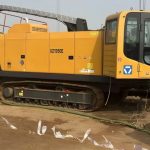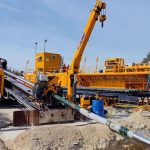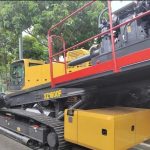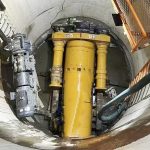Categories
Latest Updates





The pilot hole is the first step in the construction of trenchless engineering, followed by reaming. Managed jobs are based on this. Whether the quality of the guide hole, such as the turning radius of the deflection section, the smoothness of the trajectory curve, and the position of avoiding underground obstacles, is directly related to the success or failure of the subsequent pipe dragging operation. construction. Next, we will introduce the design and precautions of pilot holes for trenchless engineering.
1. The design of the pilot hole in the trenchless project must meet three requirements at the same time: one is to meet the requirements of Party A as much as possible, the second is to avoid underground buried objects, and the third is to meet the requirements of construction technology. The design of the pilot hole in trenchless engineering cannot meet the above three requirements at the same time, and only the pilot hole design scheme can be modified.
2. Important parameters for design of pilot holes in trenchless engineering
Entry angle: the angle between the drill guide rail and the ground, that is, the entry angle of the drill bit. The drill bit entry angle is usually 0-220, and the laying steel pipe is usually 0-120.
Bit inclination: When the inclination of the bit is negative, the bit drills deep; when the inclination of the bit is positive, the bit drills out to the ground; when the inclination is 0, the bit drills horizontally.
Drilling depth: The vertical distance of the drill bit from the ground. For water construction, the vertical distance between the drill bit and the water surface.
Length of pilot hole: the curve distance from the entry point to the excavation point.
Excavation angle: The slope at which the drill bit emerges from the ground. The excavation angle is often 0-180, and the steel pipe is often 0-80.
The pilot hole for trenchless engineering should not only avoid underground pipelines, but also leave a sufficient safety distance. The value when investigating the depth and position of the underground pipeline is only an estimate. There is an error, and there is a difference in the steering measurement. The drill bit will be automatically straightened during reaming. If there is a difference, the three differences are superimposed, and the drill bit damages the pipeline. When designing pilot holes, leave a safety distance to offset the three differences.
1. When the trenchless project crosses the river, the guide hole under the water surface should be designed as a horizontal hole as much as possible. It is difficult to guide the water surface. Generally, blind drilling or semi-blind drilling is used, and the pilot hole is at least 3 meters away from the bottom of the river.
2. When crossing the railway, the guide hole should be at least 5 meters away from the railway subgrade surface. If the diameter of the reaming hole is large, the depth should be deepened to ensure the safety of the railway.
3. When laying pipes under a three-story building in a trenchless project, the guiding depth should not be less than 6 meters. If the diameter of the reaming hole is large and the ground is soft, the depth of the guiding hole should be deepened.
